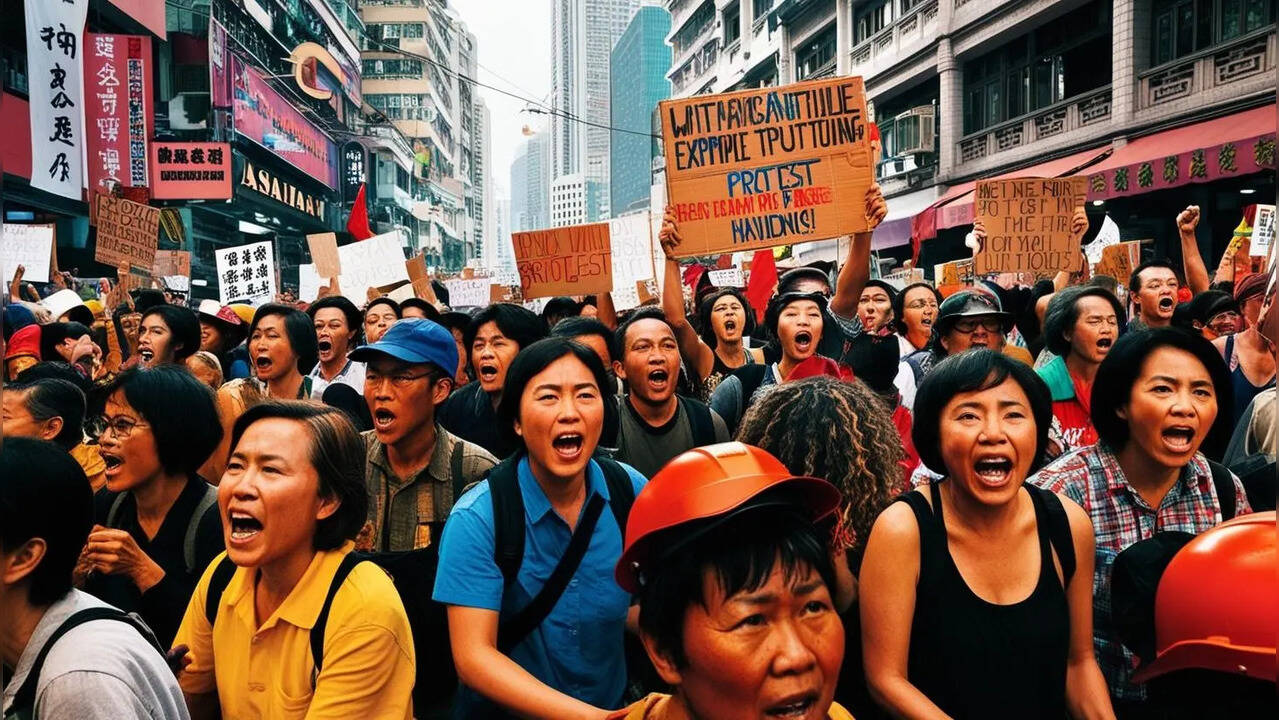
In cities like Tongliao, construction labourers climbed buildings and threatened self-harm in desperation over unpaid wages. (AI Generated Image)
Mass civil unrest has erupted across China over the past fortnight, peaking after late April 2025, as factory and construction workers reel under the impact of tariffs imposed by US President Donald Trump. The protests have spread across industrial zones from Shanghai to Inner Mongolia, triggered by severe economic distress marked by factory closures, wage defaults, and a dramatic slump in export orders. Civil disorder is escalating across China as the economic blowback from tariffs imposed by US President Donald Trump severely affects the country’s export-heavy economy, NewsMax reported. With factories shutting down and salaries unpaid, mass worker protests have emerged in industrial hubs near Shanghai and as far as Inner Mongolia. In cities like Tongliao, construction labourers climbed buildings and threatened self-harm in desperation over unpaid wages. Near Shanghai, thousands of workers from an LED light factory staged demonstrations over back pay owed since January. Similar scenes were reported in Dao County, where a sporting goods company ceased operations without compensating staff.
The unrest comes amid an economic slump, with Chinese export orders plummeting to lows last seen during the COVID-19 lockdowns. Manufacturing hubs are bearing the brunt, with widespread layoffs and defaulted payments triggering growing labour unrest.
In response to the crisis, China’s Ministry of Commerce announced on Friday that it is assessing renewed communication from the United States about restarting tariff negotiations. “China is making assessments as the United States has recently reached out to convey messages to China through relevant parties many times, expressing hope to engage in talks with Beijing over tariff issues,” the ministry said in an official release. According to the Associated Press, the ministry underscored that the United States had unilaterally initiated these trade disputes. It added that any dialogue would require “American sincerity, concrete actions, and the removal of unilateral tariffs.”
Chinese officials cautioned against what they termed as “inconsistent behaviour” and warned that attempts to use negotiations as coercion would only erode trust. The administration reiterated its refusal to negotiate under pressure.
President Trump has lifted or suspended reciprocal tariffs against various nations—including India and the European Union—but has maintained duties exclusively on Chinese imports, further isolating Beijing. While China continues to apply retaliatory tariffs, it remains the only country currently facing active US trade penalties.
The growing labour unrest highlights the domestic cost of prolonged trade conflict and underscores the urgency for de-escalation. Yet, the path to meaningful talks remains uncertain amid diplomatic distrust.